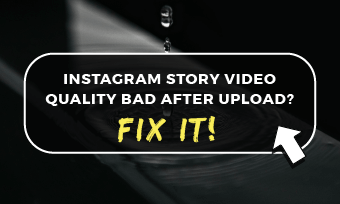Video content is quickly taking over our entertainment, education, and professional activities. Most, if not all, people living in the modern world rarely ever go through a day without seeing one piece of video content. It's on our phones, desktops, TV screens, subways, buses, sidewalks, and practically every chance to get videos in front of people's faces.
According to the 2020 Video Marketing and Statistics, 55% of people now watch videos every day. So for any individual who wants a relevant or influential job, video editing should be part of the shortlist. Whether you create content for your own brand, an employer, or a client, video editing skills will never go to waste. Brands constantly dump content on the internet and other channels all the time, and they need someone to make those videos.
But simply knowing how to make videos won't cut it. You have to be great at what you do and consistently grow your video editing skills. Here are some best practices that will help you become more effective at video editing and increase the value you give to brands and businesses.
1 | Use the Best Software Available

Effective Video Editing
A big factor in efficiency and creativity in editing videos is the kind of software you use. It’s not everything, of course, but it plays a significant role. There are many video editing programs available today, and if you haven’t tried them all, you should give it a shot before landing on the final one. Most video editing software provides some form of a free trial period to provide you with a feel of the software’s experience, capabilities, and user interfaces.
There are frame-by-frame video editors available for offline and online use. Consider trying free software tools like iMovie if you need basic editing or are just starting off. If you’re looking for a free online editor, you can try FlexClip, Clipchamp, and Kapwing.
2 | Have a Storyboard
A foundational practice of all creative video editing techniques is referring back to a storyboard. Videos are not meant to simply be a collage of video clips to create something cool. A storyboard protects the most important part of the video — the story. At the end of the day, video is a medium, and the end goal is to tell a story to the viewers.
Great stories are what drive engagement and inform and educate people. The basic parts that should be in your storyboard are the talking points and an indication of where b-rolls should go to have one cohesive message at a time. Meaning, if someone is talking about how amazing sunsets are, there should be a shot of a sunset instead of a shot of an Eagle flying over the horizon.
3 | Don't Skip out on Audio

Effective Video Editing
It should also be stated how underrated quality audio helps create better video experiences. That's why soundtracks, speaking lines, and sound effects play such an important role in the overall viewer experience. Good videos also have good audio. So make sure that you spend time polishing out the audio as well. The most basic thing to have is audio and video clips that sync up well. You can use audio and video mergers to help you with this process.
4 | Create Videos for the Internet
A powerful reason why video has become the medium of the twenty-first century is the volume of videos that go online every day. Digital channels are packed with billions of hours of videos, but there is more than enough reason to join the party.
Videos will make up 82% of all internet traffic by 2022. While the supply of videos increases, the demand increases too. While not all videos will reach a million people, it's a highly cost-effective way to reach a highly significant number. And with great video editing and storytelling, you can actually get significant results still at the end of the day.
5 | Adjust Dimensions and Duration for Each Platform

Effective Video Editing
When posting content on digital platforms, it helps your efforts more when you respect the context of the platform. As Gary Vaynerchuck says often, "content is king, but context is God". Two basic contexts to honor when creating videos for social media platforms, for instance, are the dimensions and duration of the video. Here are some basic contexts for some of the most common platforms to post videos.
Dimension
Duration
6 | Look at Analytics to Measure Video Performance
What we won't measure, we won't improve. It's good to look at analytics on posted videos to help us see how we can improve our videos. Sometimes, we think that data and analytics are a marketer's job. But many times, video editors and content creators can benefit from them too.
Look at the statistics that do matter: how much of the video did people watch? Did they respond to the call to action? If looking at analytics isn't your cup of tea, get help and have someone interpret the data for you.
7 | Start Strong and Finish Strong
Two of the most important parts of a video are the beginning and the end. They're the parts people remember most and will refer to most. So leverage on that by putting more thought into how to start a video and how to end it. Also, don't forget to put a video intro and outro to give your video an identity.

8 | Learn New Techniques
It's hard not to stress the importance of video editing techniques without talking about constant learning. We’re all works in progress, and everyone still has something to learn. So if you want to learn how to improve video editing skills, stay teachable and continue looking for courses, tutorials, tools, and mentors who can help you upgrade your skills.
9 | Use Animations and Text

Effective Video Editing
One of the other more effective video editing techniques in producing quality video is using animations and moving text to drive points and build more clarity. Video editing isn't just an art, meaning you don't want to give people a picture that gives a thousand words. You want to create a visual that clearly communicates just a few important things. Do that by adding supporting animation and titles. You can use a program like Adobe After Effects to do this. There are also many free animators online to help you streamline the process.
10 | Stay Inspired
All creatives have one common enemy — creative block. We’ve all experienced it. One effective way to break this is to keep sacred times in a day or week to look for video pegs that will inspire you by giving you new ideas to try in your editing process. Have one place where you put all your videos in for inspiration.
Getting into the Video Editing Workforce
The average annual salary of a video editor is $83,950, making it a highly coveted job. While many professional editors graduated with a film and communications degree, many passionate and creative newcomers with no relevant degree are emerging. With today's technology, anyone can start learning video editing with online courses and using robust video editing tools.















